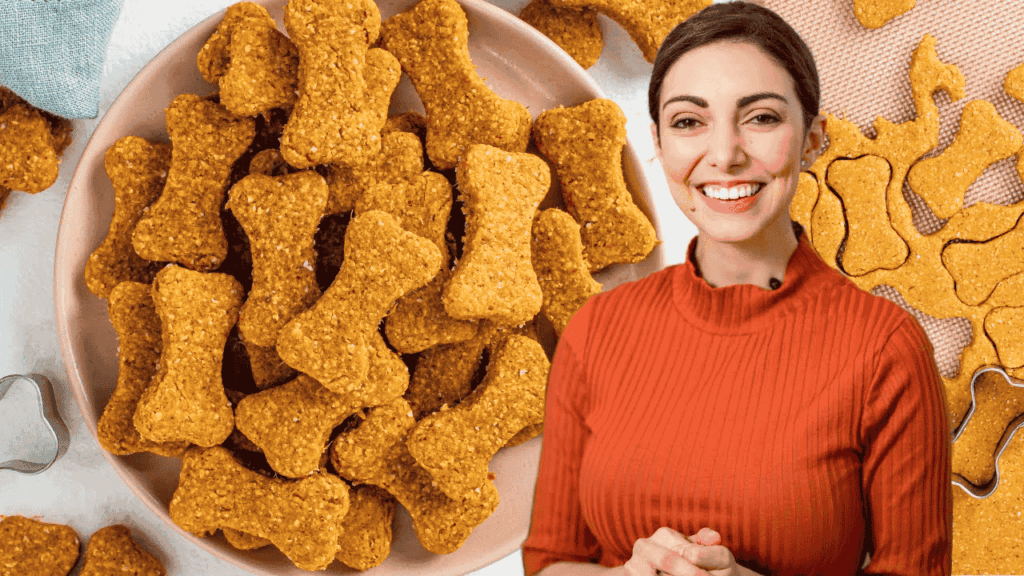In 2025, the way Americans feed their dogs looks dramatically different from even a decade ago. Pet owners have become far more conscious of what goes into their furry companions’ bowls. For years, kibble and canned foods dominated the market, offering convenience and affordability but often lacking in transparency and nutritional value. Today, a new standard has emerged—fresh, human-grade dog food prepared with real ingredients and crafted to meet the same quality and safety standards as food for people.
This change isn’t just a passing fad. It reflects a broader cultural movement toward mindful living and wellness, where people are taking greater care of themselves and, by extension, their pets. Dog owners are realizing that what their pets eat directly affects their energy, longevity, and quality of life. As a result, more households are trading in dry, processed kibble for fresh meals made with recognizable ingredients like chicken, sweet potatoes, brown rice, and spinach.
Why Pet Parents Are Making the Switch
The biggest driver behind this shift is awareness. Pet owners have started to question the ingredient lists on traditional dog food packaging. Terms like “meat by-products,” “fillers,” and “artificial preservatives” no longer sound acceptable when the goal is to nourish a beloved family member. Human-grade dog food brands have gained popularity because they eliminate the mystery. Each ingredient is clearly listed and sourced from trusted farms and suppliers.
Another reason for the switch is visible results. Within weeks of switching to a fresh diet, many dog owners report noticeable improvements in their pets’ health. Their coats become shinier, their energy levels rise, and digestion issues often resolve. In older dogs, mobility and alertness frequently improve, making fresh food an appealing choice for aging companions.
The Science Behind Human-Grade Nutrition
Fresh, human-grade dog food is different from standard pet food in both composition and preparation. These meals are cooked gently at lower temperatures, preserving the nutrients that high-heat processing would destroy. This means dogs receive more bioavailable vitamins, minerals, and proteins, leading to better absorption and utilization of nutrients.
Human-grade certification also requires that every ingredient and production step meets strict USDA standards for human consumption. This includes the handling of meats, vegetables, and grains, as well as the cleanliness of the kitchens where the meals are prepared. The result is food that is safer, fresher, and more nourishing.
Veterinary nutritionists are now emphasizing the importance of diet in disease prevention. Just as with humans, a well-balanced diet helps dogs maintain a healthy weight, supports immune function, and reduces inflammation. In turn, this lowers the risk of common health problems such as diabetes, obesity, skin allergies, and arthritis.
Personalization and Technology in Modern Pet Nutrition
The digital era has made it easier than ever to provide tailored nutrition for dogs. Subscription-based pet food services now use data-driven algorithms to craft customized meal plans based on breed, weight, age, activity level, and health concerns. Pet owners can manage everything through mobile apps, from adjusting portion sizes to tracking deliveries.
This personalization ensures that every dog gets exactly what they need—no more guesswork or generic feeding guidelines. For example, an active Labrador may receive a higher-protein plan, while a senior Dachshund might benefit from lighter meals with joint-supporting ingredients. Technology not only simplifies feeding but also makes pet nutrition smarter and more responsive to each dog’s unique needs.
Health Benefits Owners Can See and Feel
Dogs fed fresh, human-grade meals tend to show their appreciation in obvious ways. They often have healthier skin, glossier coats, smaller and firmer stools, and more consistent energy levels. Because these foods contain fewer fillers and no artificial additives, digestion improves, leading to less bloating and fewer food sensitivities.
Weight management is another major benefit. Many commercial kibble formulas are high in carbohydrates and low in moisture, which can lead to overeating and obesity. Fresh food, on the other hand, provides balanced portions of protein, fiber, and moisture that help dogs feel full and satisfied. The result is a leaner, more energetic pet that enjoys a better quality of life.
Ethics, Sustainability, and Conscious Consumerism
Today’s pet owners care not only about what goes into their dogs’ food but also how it’s made. Many human-grade pet food companies source ingredients from sustainable farms and use eco-friendly packaging. This aligns with the growing environmental consciousness among American consumers who want their choices to reflect their values.
Choosing responsibly sourced dog food supports humane farming practices and reduces the industry’s environmental footprint. Because many fresh pet food companies produce meals in smaller batches, they generate less waste and require fewer preservatives. This sustainable approach appeals to modern households seeking to minimize their impact on the planet while providing the best for their pets.
Veterinarians and Experts Support the Trend
Veterinary professionals are increasingly recognizing the value of high-quality, minimally processed pet diets. While kibble remains an option for some, many veterinarians now recommend fresh, whole-food diets for dogs with allergies, sensitivities, or chronic conditions. Some even partner with human-grade food brands to help clients transition safely and ensure nutritional balance.
Experts note that dogs are omnivores and thrive on a balanced mix of meat, vegetables, and grains when properly prepared. Fresh food diets, designed under veterinary guidance, meet or exceed established nutritional standards while providing the added benefit of real ingredients that owners can see and trust.
The Economic Perspective of Fresh Pet Food
At first glance, human-grade dog food seems more expensive than traditional kibble. However, many pet owners see it as an investment in long-term health. Healthier dogs often mean fewer veterinary visits, fewer medications, and a lower risk of chronic illness. When viewed through this lens, the cost of fresh food can actually save money over time.
Furthermore, the convenience of subscription models and portioned meals helps eliminate waste and guesswork. Owners know exactly how much to feed and can easily monitor their dog’s intake and progress. This efficiency, combined with peace of mind, makes the higher upfront cost worthwhile for many families.
The Humanization of Pets and Lifestyle Integration
The trend toward fresh, human-grade dog food is part of a larger cultural shift the humanization of pets. Dogs are increasingly seen as family members rather than property. They share our homes, routines, and sometimes even our diets. As a result, feeding them high-quality food is a natural extension of the love and care we show to other family members.
Social media has further fueled this movement. Pet owners proudly share their feeding routines, unboxings, and before-and-after transformations, inspiring others to make the switch. This visibility has created a sense of community and motivation among pet lovers to invest more thoughtfully in their dogs’ health and happiness.
The Future of Fresh Pet Nutrition
Looking ahead, the fresh and human-grade dog food market shows no sign of slowing down. Advances in preservation methods and packaging will make these meals even more accessible, affordable, and convenient. Functional nutrition—foods enriched with probiotics, omega oils, and superfoods is also expected to grow, offering targeted benefits for joint health, digestion, and cognitive function.
As research continues to highlight the advantages of whole-food diets, Americans are likely to deepen their commitment to feeding pets the same way they feed themselves: with care, balance, and attention to quality. The movement toward fresh, human-grade dog food isn’t just about trends it represents a long-term transformation in pet care that’s improving lives, one meal at a time.
Feature and Details
| Feature | Details |
|---|---|
| Type | Fresh and Human-Grade Dog Food |
| Trend Year | 2025 |
| Key Benefits | Improved digestion, shinier coat, balanced weight, allergy relief |
| Ingredient Quality | Made from real, USDA-certified ingredients |
| Preparation | Cooked at low temperatures to preserve nutrients |
| Customization | Personalized meal plans via subscription services |
| Sustainability | Ethically sourced ingredients and eco-friendly packaging |
| Health Impact | Better immunity, joint health, and energy levels |
| Cost Consideration | Premium pricing offset by long-term health savings |
| Future Outlook | Growth in functional and data-driven nutrition |
In 2025, American pet owners are redefining what it means to feed their dogs well. The rise of fresh, human-grade meals signals a shift from convenience-driven feeding to mindful nourishment. With transparency, health, and sustainability at its core, this movement reflects a deeper connection between people and their pets one that celebrates life, wellness, and genuine care.







